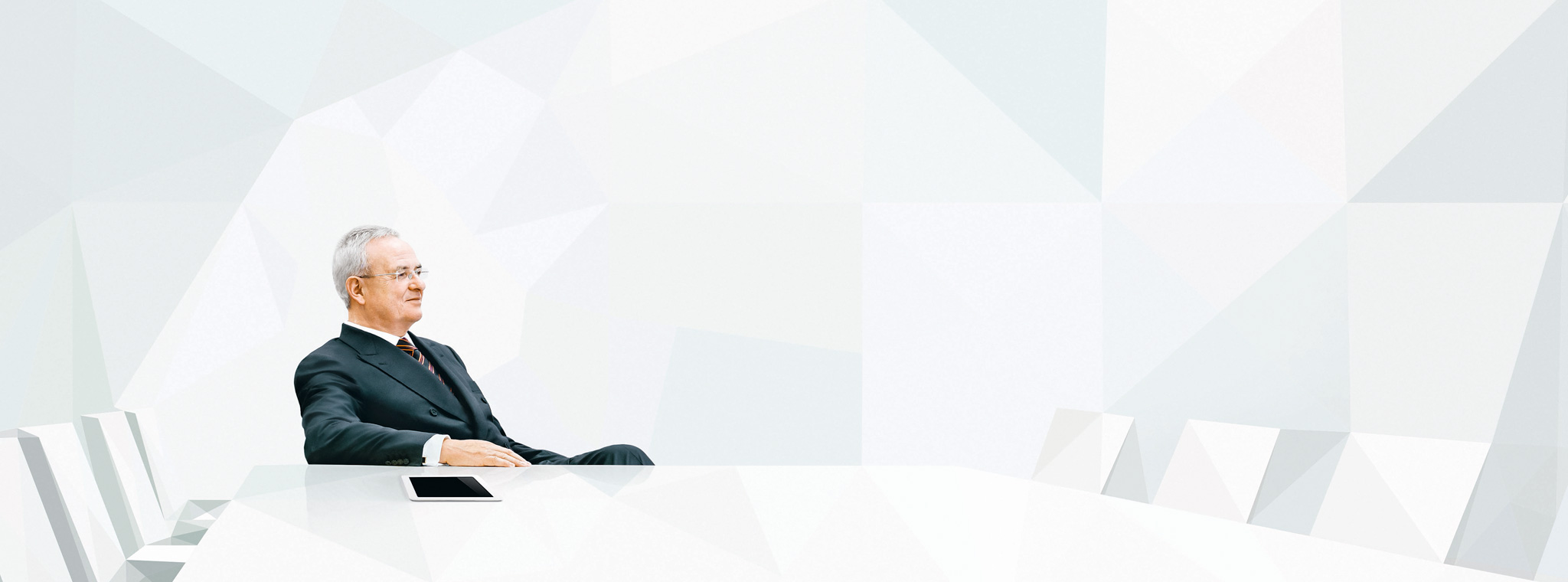Update

50 control devices, partial autopilot for navigating congestion, “always on” via the Internet – the modern car has become a computer on wheels. Now digitization is gathering speed again and changing the automotive industry from the ground up. Prof. Dr. Martin Winterkorn considers the changes that lie ahead and how we should approach them.
Our world is changing at a breathtaking pace. Globalization, rapid technological evolution and the Internet are the driving forces behind this change. Digitization is revolutionizing our lives in the same radical way as the Industrial Revolution did 200 years ago. Computers, smartphones and robots are completely redefining how we communicate, shop and spend our free time, and what our day-to-day life at the office and in the factory looks like. Digitization is of course also changing the way we shape our mobility.
The car has entered a new era: the shift in society’s values and strict CO2 laws around the world are the impetus for increasingly more economical drive systems, e-mobility, lightweight construction and energy-efficient factories. Urbanization means a need for intelligent new transportation concepts. Constant growth in computing power, fast data networks and cheap memory are what people need to be “always on”. Cars are becoming computers on wheels: engine and chassis management, driver assistance systems, navigation, communications, infotainment systems and automated driving are developing at breakneck speed.
Our ambition is to be the engine behind this change. We want to move progress. The Volkswagen Group and the entire automotive industry are not starting from scratch. We have been one of the pioneers of digitization for a long time – but now we are stepping up the pace again. We are bringing the digital world to our vehicles and connecting in-vehicle sensors with our data centers. The vehicle fleet will become an intelligent swarm, our basis for developing new mobility services. Real-time data is also needed for partially automated driving and the intelligent navigation of traffic in city centers or on motorways.
“We can and must bring the digital and the mobile worlds together.”
Prof. Dr. Martin Winterkorn
Our factories are also in line for the next major automation push. Fully networked manufacturing under Industry 4.0 is beginning to take shape. Machines are relieving employees of monotonous, non-ergonomic tasks. Robots are moving out of their “protective cages” and will work side by side or even hand in hand with people in the future.
The Internet has become the most important showroom in automotive sales. Now the focus is on seamlessly connecting the virtual, digital world with the real one. Using big data intelligently also allows us to develop new software solutions and service offerings for cars that give our customers genuine added value and open up additional business opportunities for our Company.
A brave new digital automotive world? There are of course fundamental questions that still need to be answered: will the factories of tomorrow be empty of people? Is the traffic infrastructure prepared for the opportunities the digital world has to offer? And how can we protect sensitive customer information from misuse? We are aware of our responsibilities and are addressing all of these issues carefully. At the same time, I urge you to look not just at the risks, but more particularly at the opportunities that digitization presents. Not only will driving become more comfortable and safer for people; at the same time, we will also take the pressure off the environment thanks to optimum utilization of our resources. Exciting opportunities for new technologies and business ideas are emerging for industry, which will bring growth and prosperity.
Despite all the challenges, I am convinced of one thing: we can and must bring the digital and the mobile worlds together. Digitization is therefore one of the major components of our Group-wide “Future Tracks” program, which we launched in spring 2014. On our road toward the new digital world of mobility, there is one thing that we cannot neglect, and that is to bring people – our customers, partners and employees – with us. Focus, safety and security, and trust – these values are and will remain the foundation for technological progress.
PHOTOGRAPHY
Hartmut Nägele